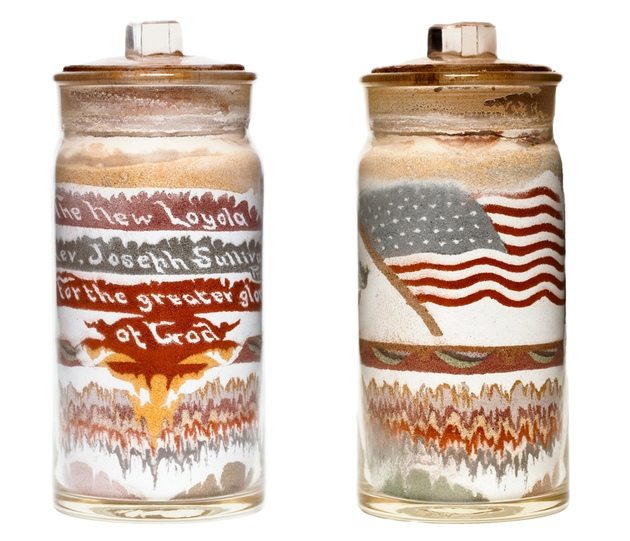Let’s start with a shout-out to Jillian Jaccard, a freshman Honors Program student. She came across the piece in the Hannon Library Archives while researching a paper for Professor Brad Stone’s Honors course “On the Sublime.” She wrote:
“The archive is overwhelmingly composed of printed material. When I went to special collections and combed through many different documents, newspaper clippings, old books, scripts, telegraphs and autographs, I began chatting with one of the workers, and she rattled off a number of items in the collection, one of which was a jar of colored sand. I remember thinking, ‘Hm … that’s strange.’”
Jaccard’s search for more info led her to the relocation of Loyola College in 1929 from its Venice Blvd. site to the rolling hills of Westchester and LMU’s home ever since. Although documentary evidence is scant, the piece, she concluded, appears to be a commemorative gift honoring Joseph A. Sullivan, S.J., president of Loyola University from 1926–30, whose vision made possible the purchase and construction of a new Loyola campus where the roads were still dirt and a bluff overlooked the Pacific Ocean (see Centennial Moment, Page 4).
Considered “folk art” today, sand jar art is made by dying sand and arranging it in a bottle using funnels, spoons and objects to create intricate designs. Among the most valuable examples are several works by 19th century artist Andrew Clemens, who produced elaborate designs that took a year to create. They sell today for $12,000 and more.
The craftsmanship of LMU’s sand jar is remarkable. Even more amazing is that the jar’s designs, down to the letters in words, the flag’s stars and stripes, remain intact after 80 years, despite being housed in a library located in one of the country’s most volatile earthquake zones. If fire is the enemy of paper, then shaking must be the enemy of sand art. LMU’s sand jar clearly has been stored as carefully as it was crafted.

